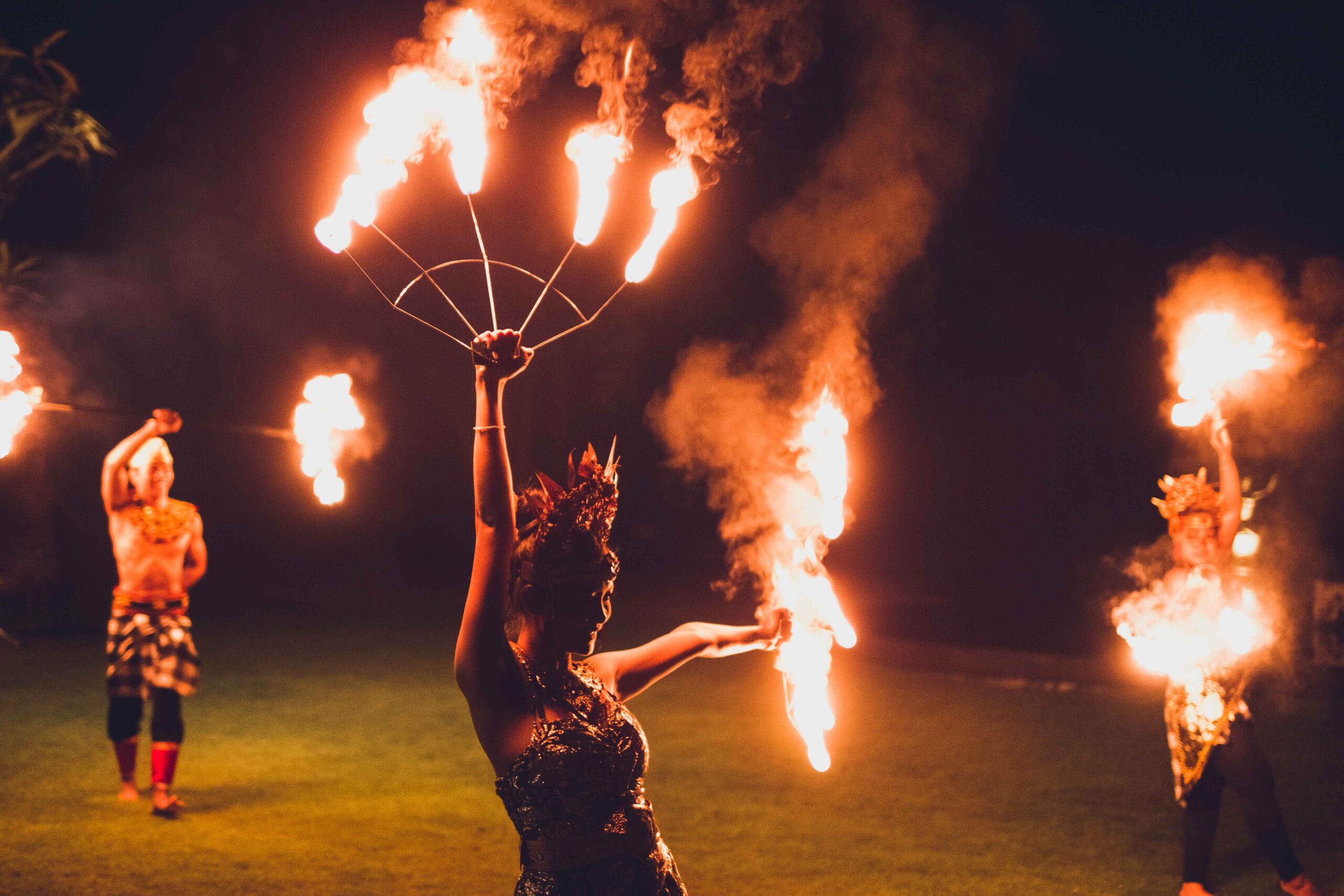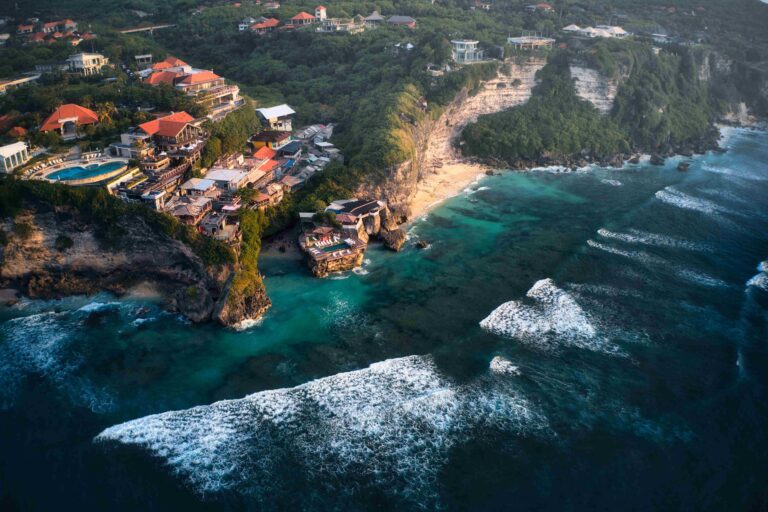The Kecak Dance (or sometimes, Kechak or Ketjak Dance) is a traditional dance that was developed in Bali during the 1930s.
Our guide to the Kecak Dance will trace its history, and meaning and point you in the right direction to witness a Bali fire dance in Person.
The History Of The Traditional Kecak Dance
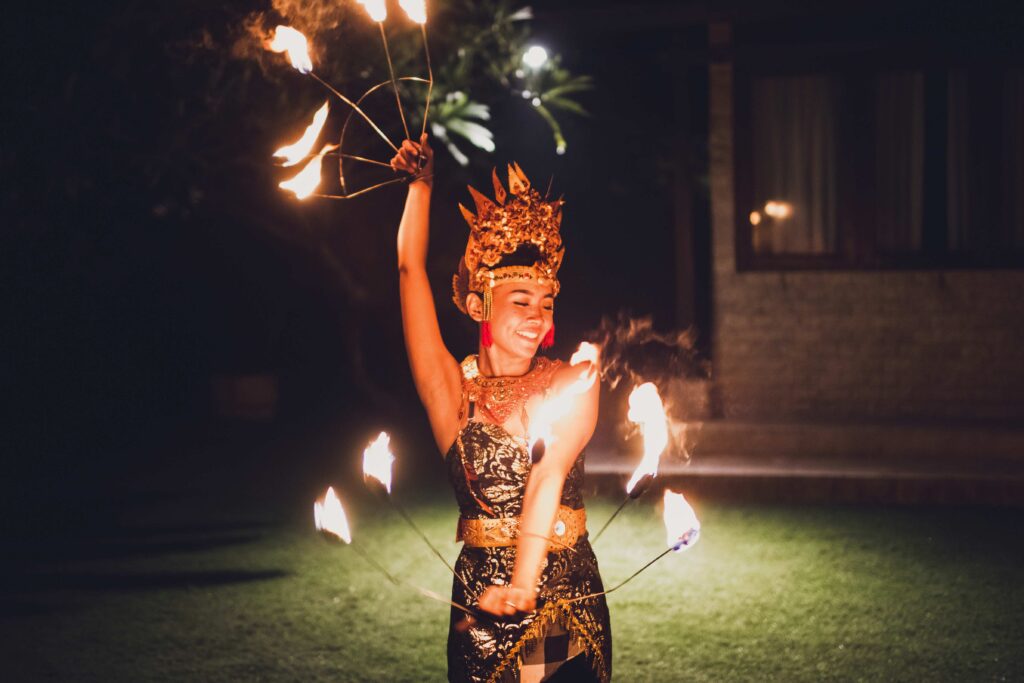
The Kecak dance was the creation of the German Artist Walter Spies, he was aware of a ritual dance performance that was already practised on the island and he encouraged local artists to adapt this to tell the Ramayan Story from the Hindu epic.
He worked with the Balinese dancer Wayan Limbak to increase the popularity of the dance by arranging for local tour groups to undertake international tours.
This ensured that what is a relatively new art form, became part of the public’s perception of what is traditional in Bali.
What Happens At Fire Dance Performances
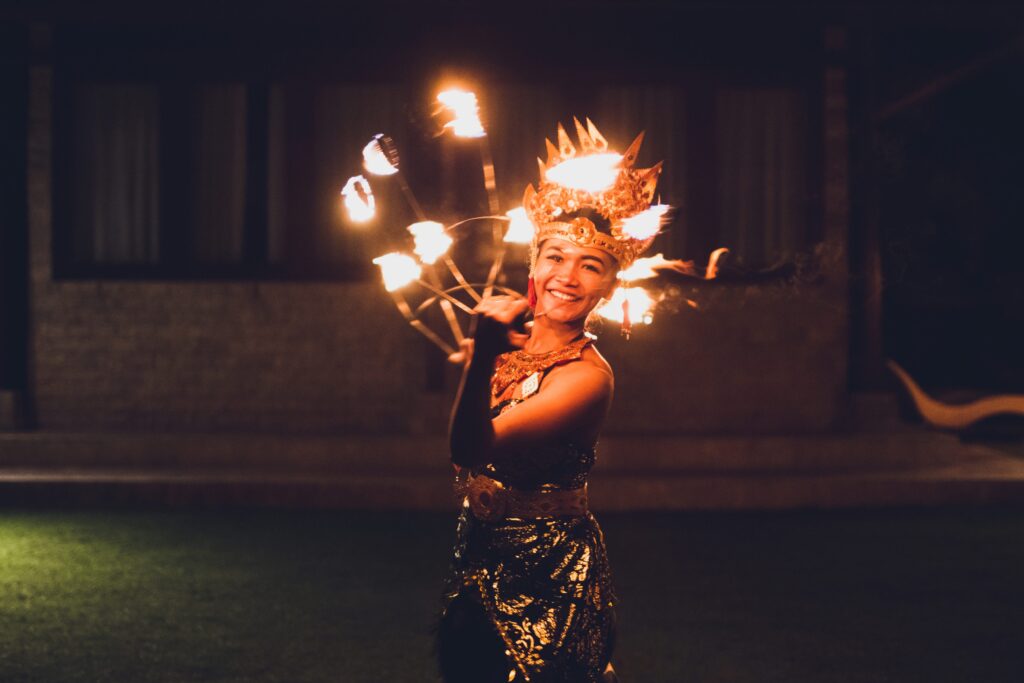
The dance is usually performed by men. (There are women’s kecak dance troupes but they are a relatively new arrival on the scene with the first being formed in 2006!).
The performers enter the stage and then move into concentric circles around a coconut oil lamp.
It’s an entirely vocal performance with no musical instruments used and as their bodies begin to sway, they start to chant, “chak-ke-chak” over and over.
The chant begins slowly but then speeds up as the performance proceeds.
The performers then act out the story using the Ramayana monkey chant as their sonic backdrop.
The Kecak Fire Dance tells the story of the monkey kingdom and Rama’s war against the Rakshasas (demons).
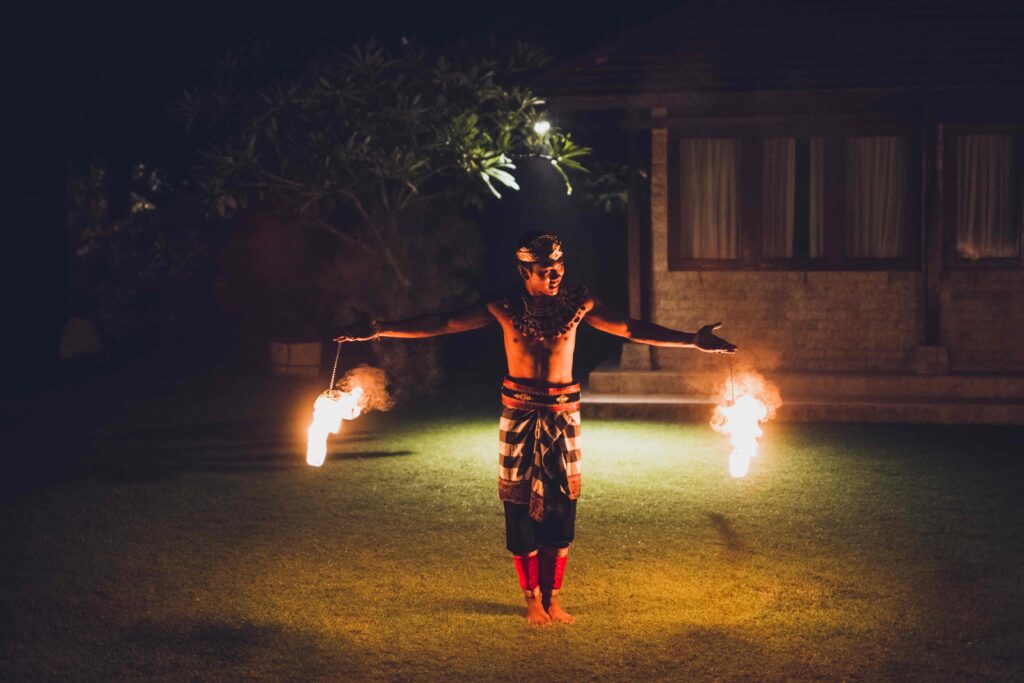
If you watch the performance carefully, you will soon discern that there are two types of performers on stage.
The first are the chanters, whose main role is to ensure that the sound continues throughout.
The second group consists of all the actors who play the roles in the story. This group will offer vocal counterpoints to the main “chak-ke-chak”.
There are also three important individual performers, one of whom marks the beat of the vocal performance, one who sings specific vocalizations during the story and a final one “the dalang” who narrates the story over the dance (in a combination of Balinese and Sanskrit).
Ritual State Of The Balinese Dancer
This is a ritual dance and in certain sections of the dance, you may find that the dancers enter a “trance-like state”.
This is particularly important in the Kecak fire dance as the dancer playing Hanuman will be, at times, exposed directly to the flames and he will not feel any pain because of this trance-like state.
Where To Witness A Bali Kecak Dance In Bali?
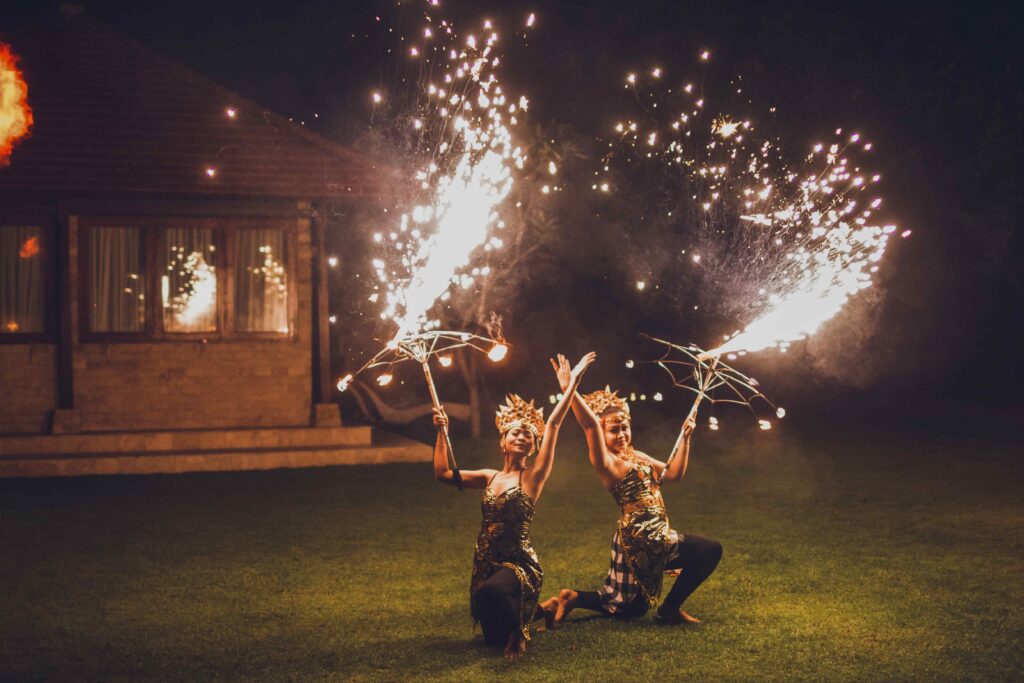
There is more than one performance of the Kecak Dance on the island but really there’s only one place that any visitor should see this dance and it’s at Uluwatu Temple.
The incredible show at Uluwatu Temple takes advantage of the clifftop presence and the cliff facing the sunset over the Indian Ocean.
As the sun goes down, the colorful cultural costumes and performers are bathed in golden hour light which is simply spectacular.
Then, the fire starts once the sun finally disappears beneath the horizon adding an amazing amount of additional drama at the Uluwatu Temple site.
However, if you can’t see the vanquishing of the evil Rahwana’s troops at Uluwatu Temple, you can also see it at Tanah Lot Temple, in the village of Batu Bulan or in Ubud at several different sites around the town or at the GWK Cultural Park.
Other Ways To See A Kecak And Fire Dance
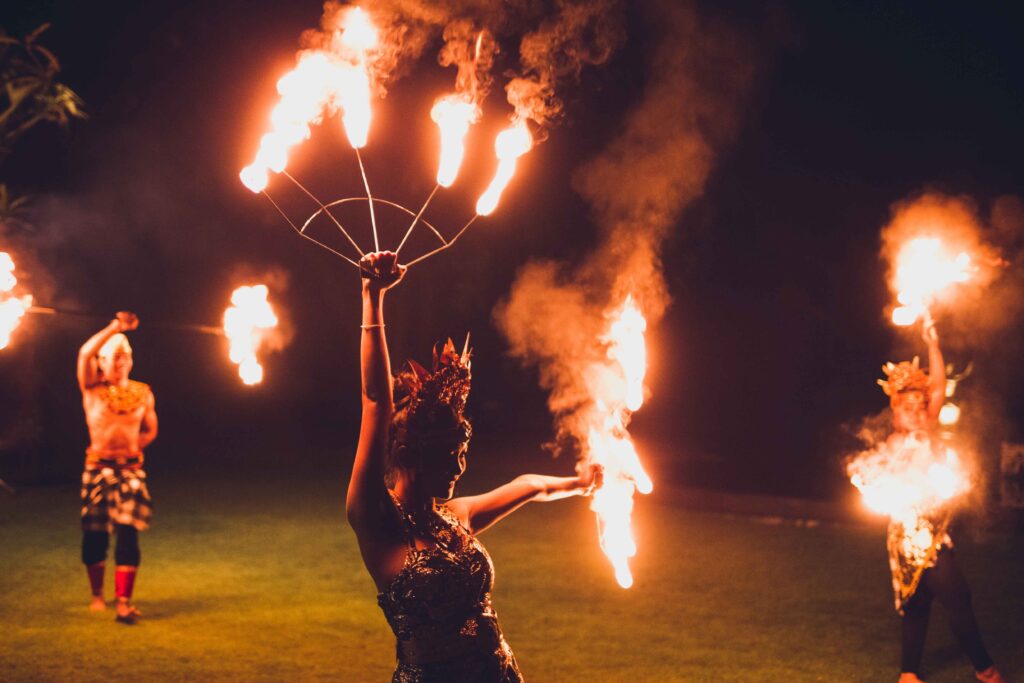
If you can’t get to Bali and really want to see the dance you can find it in several films and documentaries and even in some computer games including:
The Miracle of Bali (David Attenborough, 1969 – episodes 1 and 3)
Mama (Indonesia, 1972)
Baraka (Ron Fricke, 1992)
The Fall (Tarsem Singh, 2006)
Secret of Mana (the 1993 original on the track called “The Oracle”)
King of Fighters ’97 (there are Kecak and Barong animations in this game and a gamelan orchestra playing over the Kecak Chant)
Tetris Effect (in the Ritual Passion Level)
Dota 2 (the Kecak Chant is used as a sound effect when the Monkey King uses his ultimate ability!)
FAQs
What Does The Kecak Dance Represent? What Is The Meaning Of Kecak?
The Kecak Dance tells the story of the epic Ramayana saga from Hindu folklore and it’s a tale of good versus evil.
Is The Kecak Dance Worth It?
Yes! We think so, at least. It’s a unique performance and the setting at Uluwatu is simply incredible. It’s not expensive and the memories of this event will last a lifetime.
What Time Is The Kecak Fire Dance Show?
The time varies each day as it’s based around the time of sunset but it will start at approximately half an hour before sunset.
We’d recommend getting there early if you want a good seat as the performances can be very popular, particularly in peak season.
How Long Is The Dance At Uluwatu Kecak?
The Kecak Dance is not the longest of performances and all the dance stages tend to be complete within an hour of starting the show.
In order to set the most dramatic scene it tends to start just before sunset time to bathe the early part of the performance and colorful cultural costumes in golden light and then after the sun sets, the fire torches offer further drama.
Final Thoughts On Dance And Musical Drama At Uluwatu Temple
The Kecak Dance is one of the most unique performances in Bali and if you have the time during your visit to the temple at Uluwatu, it makes for a great way to spend an hour at sunset.
The beautiful sunset at Uluwatu Temple adds real character to the piece and you will gain a better understanding of the myths and legends that influence Balinese culture.

